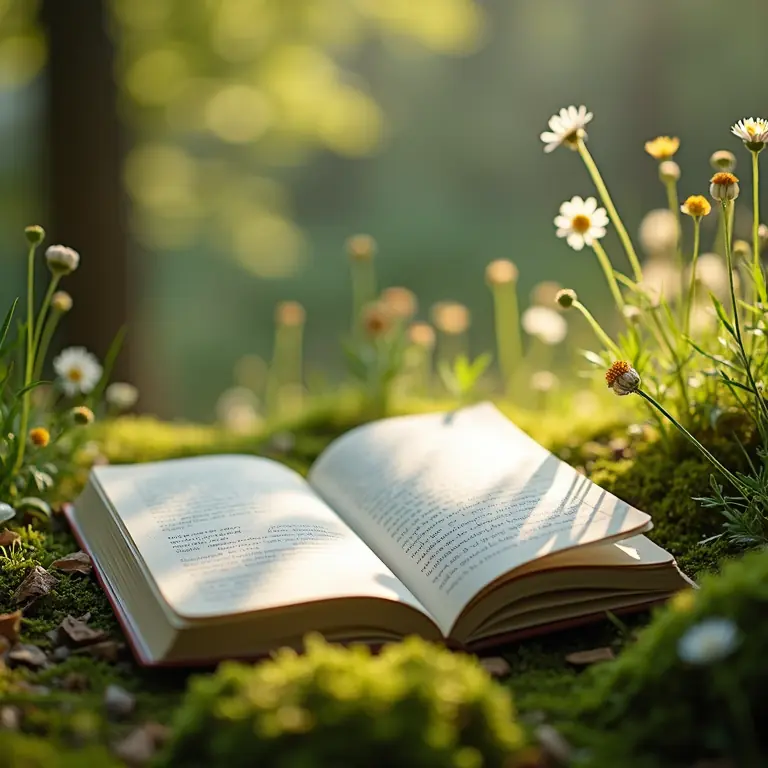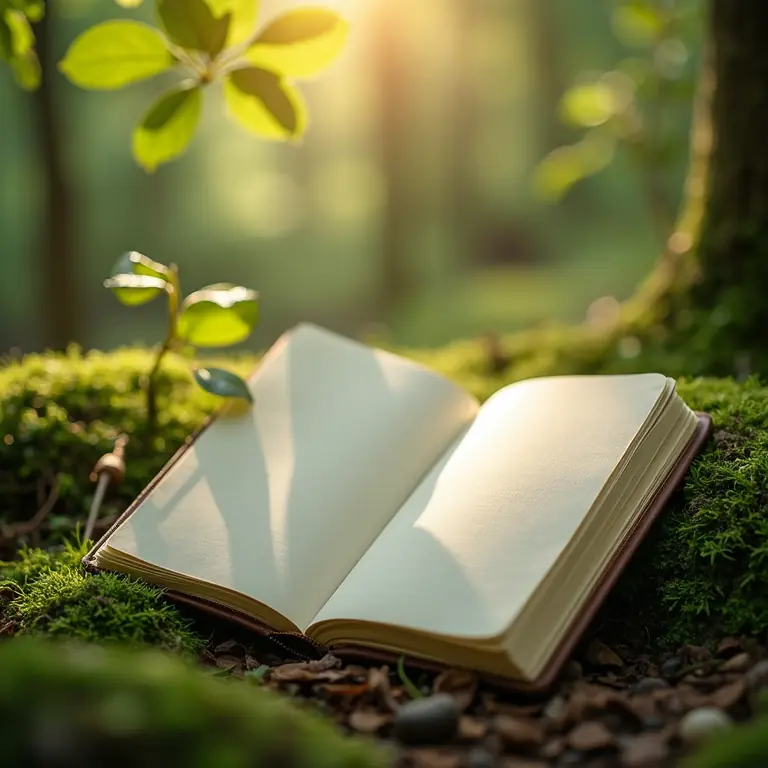Compose Your Calm: A Friendly Guide to Mindful Nature Journaling
In a world that often feels relentlessly fast-paced and digitally saturated, finding moments of genuine peace can seem like a daunting task. We’re constantly bombarded with information, expectations, and the pressure to *do* more. But what if I told you there was a simple, accessible, and profoundly rewarding practice that could help you reconnect with yourself and the natural world? That practice is mindful nature journaling.
This isn’t about being a skilled artist or a prolific writer. It’s about slowing down, paying attention, and cultivating a deeper appreciation for the beauty and wonder that surrounds us. It’s about using a journal as a space to explore your thoughts, feelings, and observations – all inspired by the natural world.
What *is* Mindful Nature Journaling?
At its core, mindful nature journaling is the practice of recording your experiences in nature with intention and awareness. It’s a blend of observation, reflection, and creative expression. Unlike simply *listing* what you see, mindful journaling encourages you to fully engage your senses: What do you smell? What sounds do you hear? How does the sunlight feel on your skin? What textures do you notice?
The “mindful” aspect is crucial. It’s about being present in the moment, without judgment. When a thought arises – perhaps a worry about work or a to-do list item – acknowledge it, and gently redirect your attention back to your surroundings. This isn’t about emptying your mind (that’s nearly impossible!), but about training your focus and cultivating a sense of calm amidst the chaos.
Think of it as a conversation with nature. You’re not just passively observing; you’re actively engaging, asking questions, and allowing the natural world to speak to you.
Why Try Nature Journaling? The Benefits are Abundant
The benefits of mindful nature journaling extend far beyond simply having a pretty notebook filled with sketches and writings. Here are just a few:
- Reduced Stress and Anxiety: Spending time in nature has been scientifically proven to lower cortisol levels (the stress hormone). Combining this with the mindful practice of journaling amplifies these benefits.
- Increased Creativity: Nature is an incredible source of inspiration. Journaling allows you to tap into this wellspring of creativity and explore new ideas.
- Enhanced Observation Skills: The more you practice paying attention to the details of the natural world, the more you’ll notice. You’ll begin to see patterns and connections you never noticed before.
- Deeper Connection to Nature: Journaling fosters a sense of belonging and interconnectedness with the natural world. You’ll develop a greater appreciation for its beauty and fragility.
- Improved Mental Clarity: The act of writing and reflecting can help you process your thoughts and emotions, leading to greater mental clarity.
- Self-Discovery: Your journal becomes a space for honest self-expression. You might be surprised by what you learn about yourself through this process.
Getting Started: What You’ll Need
The beauty of nature journaling is its simplicity. You don’t need fancy equipment or artistic talent to get started. Here’s a basic list:
- A Journal: This can be anything from a simple notebook to a beautifully bound sketchbook. Choose a size and format that feels comfortable for you. Waterproof paper is a good option if you plan to journal outdoors in all weather conditions.
- Writing Utensils: Pens, pencils, colored pencils, crayons – whatever you prefer! Experiment with different mediums to find what suits your style. Waterproof pens are ideal for outdoor use.
- Optional Art Supplies: Watercolor paints, brushes, charcoal, pastels – if you enjoy drawing or painting, feel free to incorporate these into your journaling practice.
- A Comfortable Place: Find a quiet spot in nature where you can relax and focus. This could be a park, a forest, a garden, or even your own backyard.
- Your Senses: The most important tool of all! Be open to experiencing the natural world with all your senses.
Journaling Prompts and Techniques
Sometimes, the hardest part of nature journaling is knowing *what* to write or draw. Here are some prompts and techniques to get you started:
- Sensory Descriptions: Focus on one sense at a time. What do you hear? Describe the sounds in detail. What do you smell? What do you feel?
- Detailed Observations: Choose a single object – a leaf, a flower, a rock – and observe it closely. What are its colors, shapes, and textures? What details do you notice that you might have missed at first glance?
- Nature Haiku: Challenge yourself to capture the essence of a scene in a traditional haiku (a three-line poem with a 5-7-5 syllable structure).
- Sketching: Don’t worry about creating a perfect representation. Focus on capturing the basic shapes and forms of what you see. Blind contour drawing (drawing without looking at your paper) can be a fun and freeing exercise.
- Free Writing: Simply write whatever comes to mind, without censoring yourself. Let your thoughts flow freely onto the page.
- Questioning: Ask yourself questions about what you’re observing. What is the life cycle of this plant? What role does this animal play in the ecosystem?
- Nature Poetry: Inspired by your surroundings, try your hand at writing poetry.
- Mapping: Create a simple map of your surroundings, noting the location of trees, rocks, streams, and other features.
- Phenology Tracking: Observe and record the timing of natural events, such as the first bloom of a flower or the arrival of migratory birds.
Don’t feel limited by these suggestions. Experiment and find what works best for you. The goal is to create a journal that reflects your unique connection to nature.
Beyond Observation: Incorporating Reflection
While observation is a crucial component of nature journaling, it’s equally important to incorporate reflection. Ask yourself how your experience in nature makes you feel. What thoughts and emotions arise? How does this experience connect to your life?
Here are some reflective prompts:
- How does being in nature affect your mood?
- What lessons can you learn from the natural world?
- What challenges are you facing in your life, and how might nature offer perspective?
- What are you grateful for?
- How can you apply the principles of nature to your own life? (e.g., resilience, adaptability, interconnectedness)
Remember, your journal is a private space for honest self-expression. Don’t be afraid to be vulnerable and explore your inner world.

Embrace Imperfection and Let Go of Expectations
One of the biggest obstacles to starting a nature journal is the fear of not being “good enough.” Many people believe they need to be skilled artists or writers to create a worthwhile journal. This couldn’t be further from the truth!
Nature journaling is about the *process*, not the product. It’s about slowing down, paying attention, and connecting with nature, not about creating a masterpiece. Embrace imperfection, let go of expectations, and simply enjoy the journey.
Don’t compare your journal to others. Every journal is unique, and every journaler has their own style. Focus on creating a journal that is meaningful to *you*.
Integrating Nature Journaling into Your Life
Making nature journaling a regular habit can be challenging, but it’s definitely achievable. Here are some tips:
- Start Small: Begin with just 5-10 minutes a day. You can gradually increase the amount of time as you become more comfortable.
- Schedule It: Treat your journaling time as an important appointment. Block it off in your calendar and make it a priority.
- Make It Accessible: Keep your journal and supplies readily available. This will make it easier to journal whenever you have a few spare moments.
- Find a Journaling Buddy: Share your experiences with a friend or family member. This can provide support and motivation.
- Join a Nature Journaling Group: Connect with other nature journalers online or in person.
Nature Journaling and Other Skills
Nature journaling isn’t just a standalone practice. It beautifully complements other skills and interests. For example, if you’re interested in astronomy, journaling can enhance your observations and deepen your understanding of the night sky. You can record celestial events, sketch constellations, and reflect on the vastness of the universe. Consider exploring resources on celestial navigation to further enhance your outdoor explorations.
Similarly, if you’re focused on personal finance, the mindful awareness cultivated through nature journaling can translate to better budgeting and financial decision-making. Taking time to slow down and reflect on your values can help you prioritize your spending and achieve your financial goals. Check out personal finance foundations for guidance.
Even practical skills like leatherworking can benefit from the observational skills honed through nature journaling. Paying attention to the textures and patterns of natural materials can inspire your designs and improve your craftsmanship. Learning to care for leather requires careful observation and a deep appreciation for the material.
Embrace the Seasons
Nature journaling is a year-round activity. Each season offers unique opportunities for observation and reflection. In the spring, you can record the emergence of new life. In the summer, you can explore the abundance of the natural world. In the fall, you can marvel at the changing colors of the leaves. And in the winter, you can appreciate the stark beauty of the landscape.
By journaling throughout the year, you’ll develop a deeper understanding of the rhythms of nature and your own connection to them.
Let Nature Be Your Teacher
Ultimately, mindful nature journaling is about opening yourself up to the wisdom of the natural world. It’s about recognizing that we are not separate from nature, but an integral part of it. By slowing down, paying attention, and reflecting on our experiences, we can learn valuable lessons about ourselves, our place in the world, and the interconnectedness of all things.
So, grab a journal, step outside, and begin your own journey of mindful exploration. You might be surprised by what you discover.


Discussion about this post